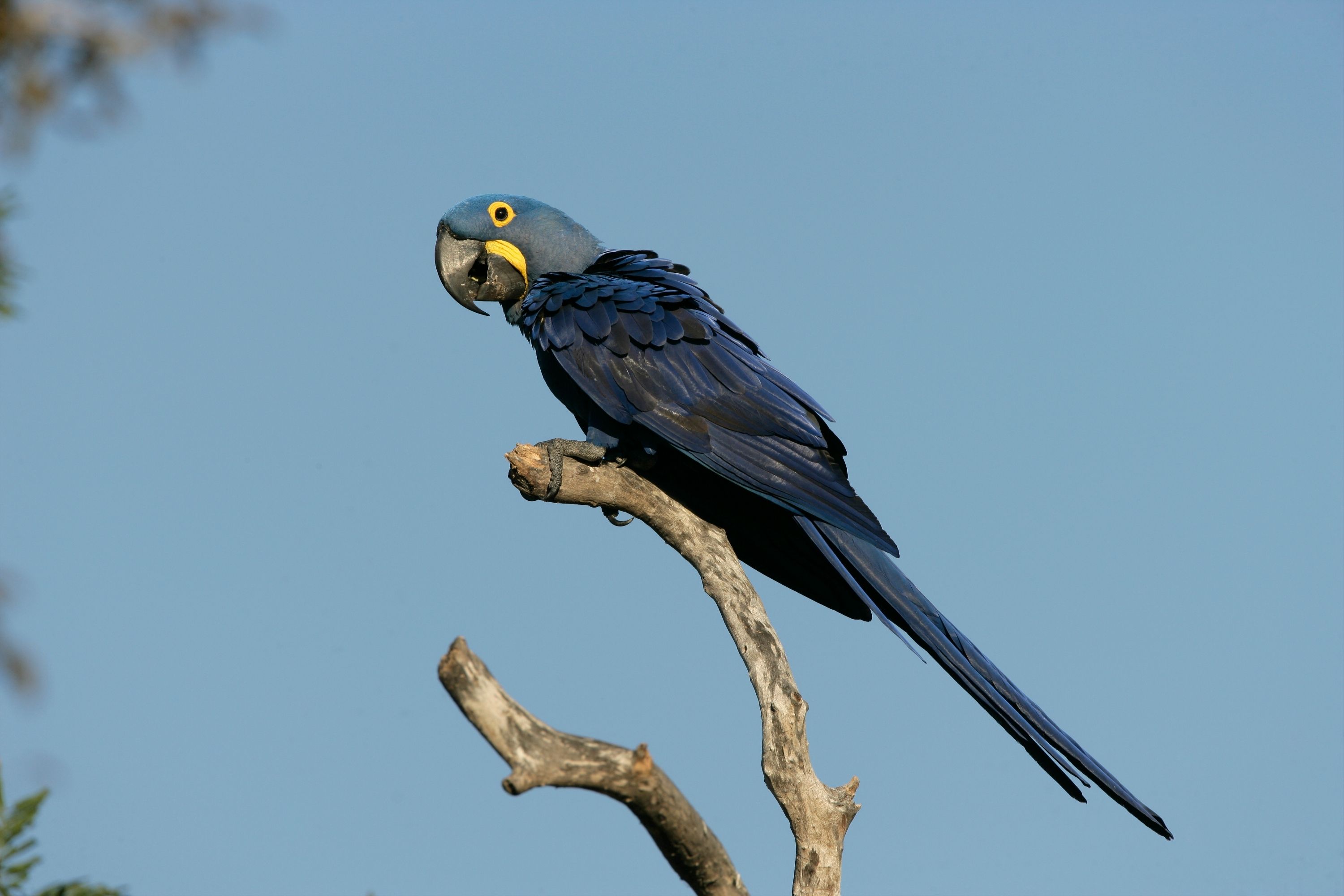Hyacinth macaw
(Anodorhynchus hyacinthinus)

Description
The hyacinth macaw (Anodorhynchus hyacinthinus), or hyacinthine macaw, is a parrot native to central and eastern South America. With a length (from the top of its head to the tip of its long pointed tail) of about one meter it is longer than any other species of parrot. It is the largest macaw and the largest flying parrot species; the flightless kākāpō of New Zealand outweighs it at up to 3.5 kg. While generally easily recognized, it could be confused with the smaller Lear's macaw. Habitat loss and the trapping of wild birds for the pet trade have taken a heavy toll on their population in the wild, so the species is classified as Vulnerable on the International Union for Conservation of Nature's Red List, and it is protected by its listing on Appendix I of the Convention on International Trade in Endangered Species of Wild Fauna and Flora (CITES). The largest parrot by length in the world, the hyacinth macaw is 1 m (3 ft 3 in) long from the tip of its tail to the top of its head and weighs 1.2–1.7 kg (2 lb 10 oz – 3 lb 12 oz). Each wing is 38.8–42.5 cm (15+1⁄4–16+3⁄4 in) long. The tail is long and pointed. Its feathers are entirely blue, lighter above. However, the neck feathers can sometimes be slightly grey. The ring around the parrots eyes and area just underneath the beak are a strong, vibrant yellow. The hyacinth macaw occurs today in three main areas in South America: In the Pantanal region of Brazil, and adjacent eastern Bolivia and northeastern Paraguay, in the cerrado regions of the eastern interior of Brazil (Maranhão, Piauí, Bahia, Tocantins, Goiás, Mato Grosso, Mato Grosso do Sul, and Minas Gerais), and in the relatively open areas associated with the Tocantins River, Xingu River, Tapajós River, and the Marajó island in the eastern Amazon Basin of Brazil. Smaller, fragmented populations may occur in other areas. Over the last few decades the known range in Bolivia has grown. It is well known from the far southeast of the country near the tri-national border point with Brazil and Paraguay, where it is considered an emblematic symbol of the region, and locals often feed the macaws maize, like chickens. In the early 1990s it became apparent the species also occurred in the remote Noel Kempff Mercado National Park area a few hundred kilometres northward. Most of the Bolivian population of this macaw is thought to be found in the San Matías Integrated Management Natural Area, an area with extensive pantanal (swamp).
Taxonomic tree:







